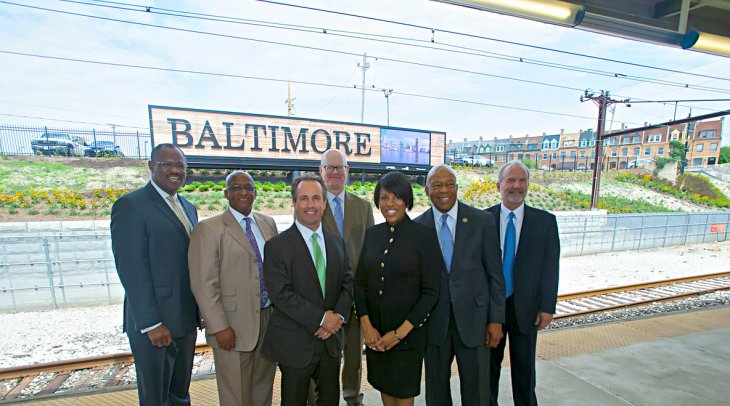A City's Infrastructure
Friday Aug 15th, 2014

Originally posted in The Rawlings-Blake Review #214
To grow our city, we have to find innovative ways to attract new residents, while giving those already here more reasons to stay. A critical tenet of my strategy is expanding our thriving tourism industry to grow Baltimore’s economy and improve the quality of life for our communities. And, I’ve got some good news—its working! Last year alone, our tourism industry helped to drive an economic impact of $363 million for the state and $266 million for the city. While this is great, I know we can do even better. However, in order to do that, we must remain focused on rebuilding our aging infrastructure.
Our historic Penn Station has greeted Baltimore’s visitors since 1911. It is one of the busiest transit hubs in the country, with more than a million passengers passing through Baltimore each year. But for far too long, this Baltimore icon has been neglected. Last week, I was proud to officially unveil a new “Baltimore” sign and video display at Penn Station to ensure that twenty-first century visitors get a twenty-first century welcome to our city. The innovative and eye-catching project is the newest result of the Station Improvement Program. By creating a stunning gateway and vibrant welcome, we’ve replaced what was once just a hill full of litter with a glimpse of the things that make us “Charm City.”
As we continue to grow our city, we must build in a way that supports both immediate and long-term growth of our transit systems. Earlier this week, I joined with Senator Mikulski and Congressman Cummings to speak earnestly about securing commitments that will enable cities, like Baltimore, to plan for the future and grow.
Baltimore is strongest when our communities are heavily involved in improving our city. That’s why over the past few months, I have been holding telephone town hall meetings in an effort to engage residents and discuss what matters most to them. In conversation after conversation, one topic stands out—water bills. To help lift some financial burden on those that need it most, I increased financial assistance on water and sewer bills for low-income Baltimore City residents by 11 percent last month.
While we must remain mindful of the financial burdens our residents face, we also need to think long term. Earlier this month, I announced an innovative new program that will improve service for Baltimore City’s water utility customers—the BaltiMeter water meter upgrade program. Beginning in about a month, nearly 5,000 residential and business customers will have their old water meters replaced with state-of-the-art, automated meters that are more efficient, reliable, and accurate. The new meters will completely eliminate the need to take second, or even third meter readings. BaltiMeter represents another huge step forward in customer service by our city’s Department of Public Works.
Like every city, we have our share of problems. Anyone can criticize and tear something down, but it takes leadership to build. I will continue working hard every day to find and implement solutions to Baltimore’s challenges. Together, we are building toward our shared vision of a better Baltimore.